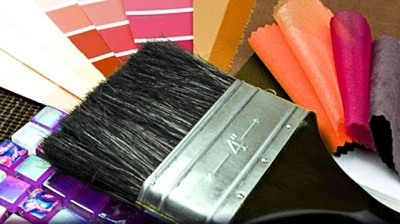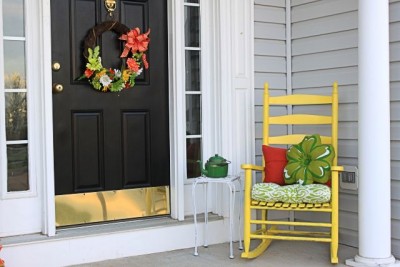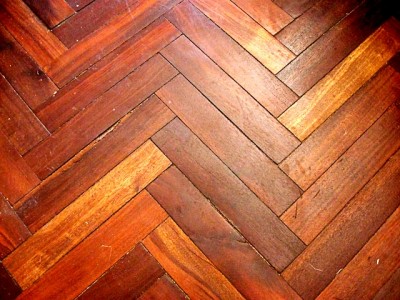10 Tips to Prepare Your Home for Sale
Thousands of homes and properties are going up for sale all around the United States every month. How do you go about getting top dollar for your home and stand out from the crowd? Following the tips below will help you get achieve what most sellers want – top dollar for their home!

1. Paint Color
When choosing an exterior paint color, stick with what’s popular in the neighborhood, goes well with the surroundings of the area, or fits the style of the home. Picking a paint color that is not common or completely clashes with the rest of the neighborhood is a very risky decision, especially when thinking about listing a home. When it comes to paint, choose safe colors for the biggest return on investment. The same should be considered for interior paint — big, bold, bright colors might work for your current design scheme, but when buyers walk through a home, and the main living space is four different colors, it’s likely all they’ll see is dollar signs and time spent repainting.
2. Landscaping
When thinking of landscaping, consider the plants or trees before anything gets planted — trees and roots can wreak havoc with lawns, foundations and pipes; take into consideration how large a plant or tree will get and how far the root system will travel over time. Landscaping has the capability of making – or breaking – a home sale. No one wants your sale turned into a long, laborious process!
3. Your Front Door
The first thing after landscaping your buyer sees, you certainly want to leave a great impression. If the door is broken, doesn’t work properly, or is in desperate need of a makeover, a
buyer may see these things as weak points and consider offering less.
4. Upgrades
If you’re considering upgrading your home before putting it on the market, look to areas that are sure to make you money: kitchens and bathrooms, if tastefully done, will always add to the value of a house. Pools, however, are notorious for poor return on investment (as well as other large upgrades). Be wise and don’t assume you’ll recoup every penny of your investment – especially in large additions to your home.
 5. Fireplaces
5. Fireplaces
Stop before you change the aesthetics of that fireplace! Although Fireplaces appeal to a large majority of buyers, It’s best to take trends into consideration when making updates or changes to a fireplace — painting over exposed brick can be a huge deal breaker for some buyers, especially when a majority of people like exposed brick fireplaces.
6. Appliances
Potential buyers look at the appliances in a home to gauge their age and how well they’ve been taken care of. Appliances play a large part in any home, and if they are old, outdated and no longer working can create hesitations in potential buyers. If it’s a classic that still works, don’t worry about replacing it; if you can’t get the door clean, or the oven temperature doesn’t rise above 350 degrees, it’s probably time to replace it. There’s no need to go all out on the latest and greatest technology either — while a beautiful stainless steel fridge might be alluring, it’s likely you won’t recoup the cost through the home sale, and it’s more likely you’ll want that classy fridge in your new home.
7. Small Stuff/Cleaning
Most buyers have an eye for the small details of a house. An initial deep clean of the house, and continued maintenance thereafter, shows potential buyers that the house has been maintained. The small details matter: windows and window tracks, light switches, molding, a garbage disposal, tile, grout, sinks, ovens and appliances are all looked at by buyers. Make sure these items are not overlooked when the house goes on the market — potential buyers will appreciate the time you took to address them.
8. Trends
Trends can be quite alluring for those looking to dabble in interior decorating. Some buyers like trends, but the majority of buyers look for classic, neutral colors on walls and fixtures. While a chevron pattern may be the perfect accompaniment to your current sofa or bedspread, most buyers will see the pattern, when applied to walls, as a potential paint job. If you’re considering listing your house, consider accessorizing with drapes, pillows and some pictures. These are simple ways of adding personality, and buyers will appreciate a neutral color scheme on the walls.
9. Surface/Floors
Buyers always look at the floors and counters in a potential home, and these surfaces can be huge selling points. If the counter tops are stained, hardwood floors scratched up, carpet damaged, or the tile is breaking, consider cleaning or finding a quick replacement. If a solid counter top is stained, a buyer will no doubt see dollar signs. If you have hardwood floors, some products can actually dull the wood over time. If the wood needs a little TLC before the house is listed, consider having the floors buffed — this will add some life, and buyers will see that they’ve been cared for.
10. Small Spaces
Kitchens and bathrooms are undoubtedly some of the biggest selling features of a house or property. If either of these areas is small, consider revamping to make them look larger. A small bathroom with no windows is going to look like a cave if the color scheme is on the darker side. Bigger in a small space is always best — stick with neutral, light colors to help make the room look larger. Update any light bulbs that are reaching the end of their life; upgrading to a higher wattage or lumen can help enhance a small area too.
Prepping your home before a sale will always result in better viewings and interested buyers, and the end result will be a happy seller and an even more excited buyer.






